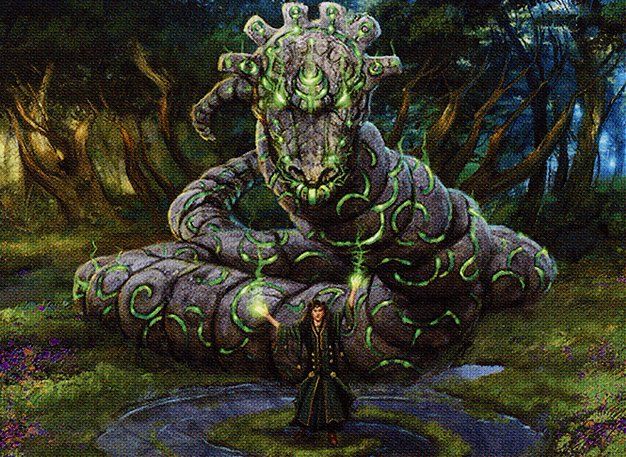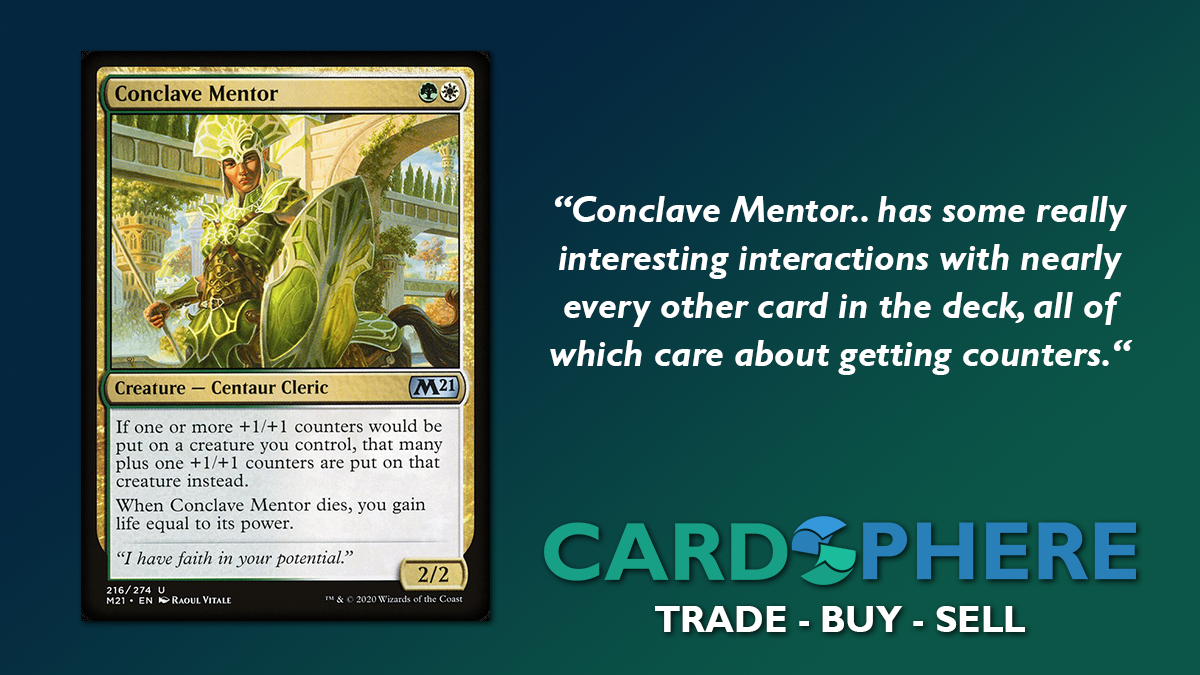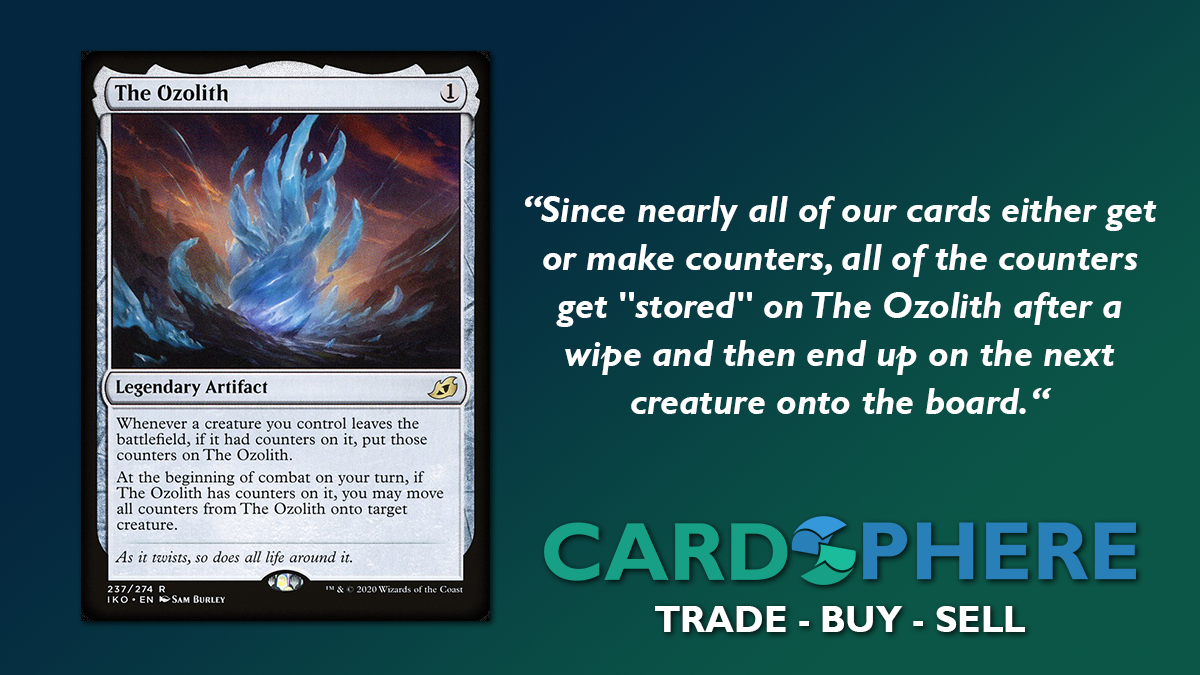Is FUN As Important as GOOD?: Standard GW Counters

Social media has made hyperbole even easier than finding the right emote on your phone.
Everything is the WORST EVER or the BEST EVER. When was the last time you read someone on Twitter describe a recent meal or a local politician as, "Eh, it was okay." If you thought something was just average, you probably wouldn't bother to write about it. It's one of the reasons that McDonald's is never anyone's choice for an anniversary meal, but makes money hand over fist no matter what happens. They're not amazing, but anyone who decries their food as disgusting probably has standards way, WAY higher than yours. They're decent. And they made HUGE bank for being decent.
The same happens in the MTG media world. The HUGE majority of articles consist of people talking about either the BEST of the game (if you haven't figure out how to play Temur Rec yet, or you're not sure whether Uro, Titan of Nature's Wrath is a good card, have I got some stories for you!), or the WORST (whatever the outrage of the week is on social media or 3Feri hatred). But what about the middle? What about the uncertainly that nearly every MTG player experiences who steps outside of the meta and tries to do something for themselves?
Today's deck, in my opinion, is in the middle. I think it's very FNM-level in terms of its power level. It can compete with the tier 1 Standard decks when it gets decent draws, but I'm not going to lie to you and say that it's as strong as the Bant Mythics of the world. It's good enough for be to hold steady and sometimes slowly climb at the Platinum level on Arena. But it might be the most fun I've had playing Standard in a few months. It does some goofy things when it goes off. It requires you to make some challenging decisions in terms of the reads you put your opponent on and the order in which you play things for maximum power. And it's different enough to what everyone else is playing that you'll get some reactions to playing a handful of cards that are getting zero play in Standard right now. So let's take a look at Selesnya Counters:

4 Stonecoil Serpent
4 Pelt Collector
2 The Ozolith
4 Conclave Mentor
4 Scavenging Ooze
4 Huatli's Raptor
3 Barkhide Troll
3 Wildwood Scourge
2 Wildborn Preserver
3 Primal Might
2 Yorvo, Lord of Garenbrig
2 Vivien, Arkbow Ranger
4 Temple Garden
2 Fabled Passage
5 Plains
12 Forest
3 Oakhame Adversary
3 Garruk's Harbinger
4 Heroic Intervention
2 Questing Beast
3 GemrazerI was initially intrigued by this list when I was shown it by Valdor, a longtime viewer and mod of my stream who is an EDH champ. He was attempting something like this in Historic, and since about 90% of the list was Standard legal, I modified a few things and started testing it out. It's at about the 80th iteration, and it happens to be a ton of fun. It's built around the new M21 card and Limited champ Conclave Mentor. For a two mana 2/2, you get an additional +1/+1 counter every time you get at least one. This has some really interesting interactions with nearly every other card in the deck, all of which care about getting counters. For instance, simply playing Mentor after dropping a Pelt Collector immediately lets you attack with a 3/3.
I list Stonecoil Serpent with the one-drops because one of the things that you have to get over is the desire to cast Serpent as huge as possible. It's fully okay (and often just correct) to play Serpent as a 1/1 on turn 1 to provide a target for your other cards to augment it. We are at heart an aggro deck and we do better with a fast start.

Most of the action hits at the two-drop slot, where we find the aforementioned Mentor. Another X-card I list in a different-than-usual place is Wildwood Scourge, which gets a counter every time any other non-human creature gets a counter. This means that if we have two other creatures out with counters when we play a Proliferate effect, for instance, it not only gets the Proliferate counter but two additional counters, one for each of the other creatures. We need this on the board as early as possible, which means sometimes it is correct to play a sad little 1/1 Scourge for two mana, with the hope that we can play multiple creatures on the following turn and go to town.
We also play Huatli's Raptor which is good both early to get your Collector to a 3/3 on turn 2, and late to pump up anything with a counter on it. Barkhide Troll is just a big body that comes with a counter and can protect itself late-game if needed from targeted removal. Wildborn Preserver is great to flash in at end step, and then get a bunch of counters when you play another creature on the next turn (which also triggers the Scourge). Scavenging Ooze is probably the strongest single card in the deck at this point. There are simply so many live targets for you to eat up, and there are many times your opponent's turn 3 Uro will become Ooze food on your turn and slow down their deck considerably. If you play a turn 2 Mentor and get to eat a Uro on turn 3, you're getting a 4/4 Scavenging Ooze. Value!
The main deck removal spell of choice is Primal Might, which I've found to be SLIGHTLY better than Ram Through. There are times when the ability to quasi-trample through a board stall will get you a ton of value, especially if you've got a huge Pelt Collector, or when you just need a punch or an instant-speed spell. But Primal Might has been a little better because of its scalability to the boardstate. On top of that, there are times where you don't really care about the fight effect and need a literal pump spell, and Primal Might does the trick.
We finish up the top end (and this is a 23-land deck so we're trying to keep everything low to the ground) with a couple of copies of Yorvo, Lord of Garenbrig and a couple of Vivien, Arkbow Ranger. Yorvo makes a lot of counters. Period. That's the list. Vivs is just a great card for this deck and can cause a lot of auto-scoops by the opponent if she shows up at the right time. Her plus effect adds counters and lets you attack through board stalls, her minus is great removal, and I can't tell you about her ult because I've never used it. That's not what she's here for.

The most quixotic card in the deck is The Ozolith. It's hard to justify more than two because it doesn't immediately effect the board state and can sometimes just fizzle. But it's also the card that keeps making me eye my decklist to see if I can sneak in a third, because games just feel so much better when it's on the battlefield. The Ozolith essentially functions as permanent boardwipe protection. Since nearly all of our cards either get or make counters, all of the counters get "stored" on The Ozolith after a wipe and then end up on the next creature onto the board. So your sad post-boardwipe 2/2 immediately becomes a 6/6 or even bigger. And if that creature dies, all of THOSE counters can just go on the next creature. This is the deck that The Ozolith was made for, and I love playing it, but I'm also suspicious that my love for it is bigger than its actual worth. Your mileage may vary.
All of the sideboard creatures have ended up in the main at one point or another, but I decided to keep the primary sixty cards focused towards its primary goal and bring in the other cards in situations where they can truly thrive. Oakhame Adversary is a really underplayed card with the sheer amount of green in the format, and a 2/3 deathtoucher for two mana is great for the mono-green matchups that can even draw a card from time to time. Garruk's Harbinger is the same, but for black decks. It protects itself from most black targeted removal, and if you get even one attack through with it you'll love the card draw. I've crowed about the versatility of Gemrazer in past columns, and its worth has not lessened. It's especially good in a deck like this where there are lots of base stat 0/0 creatures that would love an extra +4/+4 underneath a bunch of counters. Questing Beast is still great against superfriends decks, and the full playset of Heroic Intervention is a must to avoid boardwipes. It's so nice to have such a strong sideboard card back in the game to help out the go-wide strategies.
As I mentioned before, the pattern of gameplay is really nuanced and is heavily determined on reading what your opponent is playing and what you think they might or might not have in hand. Against durdly decks, you can just jam everything onto the board and go aggro. But against other decks or decks with sweepers, you have to judge the game as it comes. Is it best to use turn 1 to play your Pelt Collector or are you safe to get The Ozolith down before removal starts getting in play and protecting yourself? Can you afford to save your Stonecoil Serpent to play as a 3/3, or do you need the counters and reach right now? When is it safe to play your underpowered Wildwood Scourge in the hopes of capitalizing by playing multiple creatures before it can attack? All of these things are decisions that you have to make with this deck, and most of it can only come through experience.
In general, you want your one-drops and counter creatures to be on the board slightly earlier than you are accustomed simply because the power of the explosive turns more than makes up for those games where you're a tiny bit behind.Often times you're attacking for three or four against slower decks and trying to protect against over-committing or getting blown out by a bounce spell or a trick. But it's this gameplay challenge that has brought me back over and over again to playing GW Counters. I think you'll find it fun as well.
Stay safe, hoard lots of pennies for counters in the current coin shortage, and drive friendly!
